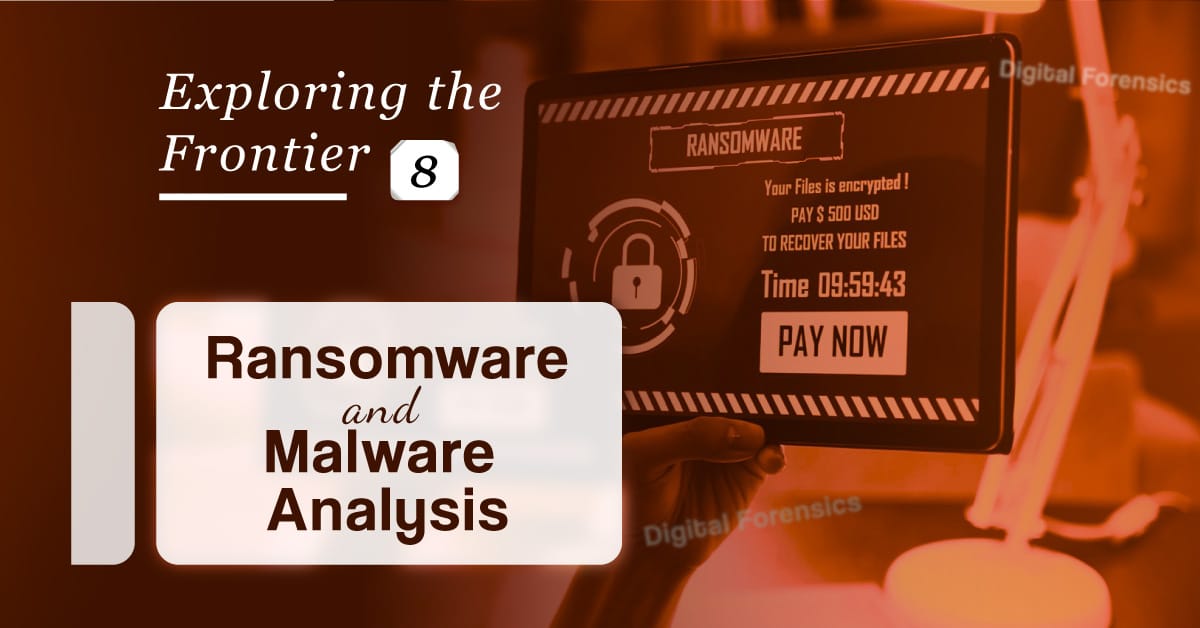Contributed by: C. Gene McClain, CFCE, CCLO, CCPA, MCFE, Director of Forensic Operations
In the digital age, where data is the most valuable asset for individuals and organizations alike, ransomware and malware have emerged as some of the most significant threats. The rise of sophisticated ransomware attacks has forced businesses, governments, and even individuals to prioritize cybersecurity more than ever before. Forensic experts, who play a critical role in investigating these incidents, are now focusing heavily on malware analysis and mitigation strategies.
As the 8th topic in our ongoing series, “Top 10 Hottest Topics in Digital Forensics for 2024,” we delve into the world of ransomware and malware analysis. With ransomware attacks becoming more frequent and destructive, the ability to analyze malicious software, understand its behavior, and trace its origins is essential for both preventing and responding to these attacks.
The Escalating Threat of Ransomware
Ransomware attacks have grown dramatically in recent years, with high-profile incidents making headlines across the globe. Cybercriminals use ransomware to encrypt an organization’s data, demanding a ransom payment in exchange for the decryption key. Often, these attacks are accompanied by threats to leak sensitive information if the ransom is not paid publicly.
In 2023 alone, ransomware attacks resulted in billions of dollars in losses for organizations of all sizes. These attacks not only disrupt operations but also severely damage reputations and put personal and corporate data at risk. The increasing frequency of ransomware incidents has made it one of the top priorities for forensic experts in 2024 as they develop more advanced techniques to analyze, track, and neutralize these threats.
What is Malware Analysis?
Malware analysis is the process of dissecting and understanding malicious software to determine its behavior, purpose, and potential impact. In the case of ransomware, forensic experts need to understand how the malware infiltrated the system, what encryption techniques it used, and whether it left behind any vulnerabilities that could be exploited to prevent future attacks.
The primary goal of malware analysis is to mitigate the threat by understanding the malware’s behavior. This includes identifying how the malware spreads, what data it targets, and whether it communicates with any external servers to carry out its instructions. By analyzing these aspects, forensic professionals can develop countermeasures to stop the malware in its tracks and help organizations recover from the attack.
Dynamic vs. Static Malware Analysis
Forensic experts generally rely on two primary techniques for analyzing malware: dynamic analysis and static analysis.
Dynamic Malware Analysis involves executing the malware in a controlled environment, such as a sandbox, to observe its behavior in real time. This method allows experts to see exactly how the malware operates, including how it interacts with the system, network, and any connected devices. By understanding the actions that the malware takes when it is active, forensic experts can develop strategies to detect and neutralize it.
Static Malware Analysis, on the other hand, focuses on examining the malware’s code without executing it. This process includes reverse-engineering the malware’s binary code to understand its underlying structure and functionality. Through this method, forensic experts can uncover hidden commands, embedded encryption keys, or other clues that provide insight into how the malware operates.
Both techniques are crucial for a comprehensive understanding of ransomware and malware, and forensic experts often use them in combination to ensure the most thorough analysis possible.
Tracing the Origins of Ransomware
One of the critical components of malware analysis is attribution—determining where the malware originated and who is responsible for the attack. Cybercriminals often go to great lengths to cover their tracks, using encryption and anonymous communication networks to evade detection. However, forensic professionals use a range of techniques to trace the origins of the malware, which can provide critical information for law enforcement or help prevent future attacks.
Digital forensics specialists analyze the malware’s code to look for unique signatures or behaviors that may be associated with known threat actors. Additionally, they can trace network traffic patterns or uncover evidence of command-and-control servers that were used to distribute the malware. By identifying the source of the ransomware, forensic experts help organizations understand the scope of the attack and work to prevent similar incidents in the future.
Incident Response and Mitigation
In the event of a ransomware or malware attack, time is of the essence. Forensic experts play a critical role in incident response, helping organizations contain the threat, recover data, and prevent further damage. As part of their response, forensic experts often recommend the following steps:
– Isolate the infected systems to prevent the malware from spreading.
– Preserve digital evidence to ensure that the full scope of the attack can be analyzed later.
– Determine the extent of data compromise, including whether sensitive information was exfiltrated.
– Identify any vulnerabilities that allowed the malware to penetrate the system in the first place.
– Recover encrypted data, either by paying the ransom (though this is not recommended) or through other technical means such as restoring from backups or reverse-engineering the malware’s encryption methods.
By following these steps, forensic experts can help organizations recover from ransomware attacks and put measures in place to prevent future incidents.
The Role of Artificial Intelligence in Malware Analysis
As ransomware and malware grow more sophisticated, forensic experts are increasingly turning to artificial intelligence (AI) and machine learning to enhance their analysis capabilities. AI-powered tools can rapidly scan vast amounts of data, detect anomalies, and even predict new forms of malware based on past behavior patterns. These tools help forensic experts stay one step ahead of cybercriminals, allowing for faster detection and more effective mitigation of ransomware attacks.
Machine learning algorithms, for example, can analyze network traffic to detect signs of malware activity in real-time, flagging suspicious behavior before it can cause harm. Similarly, AI tools can automate parts of the static and dynamic malware analysis processes, allowing forensic experts to focus on the more complex aspects of their investigations.
Conclusion
As ransomware and malware attacks continue to rise, the need for robust malware analysis techniques has never been more urgent. Forensic experts must stay ahead of cybercriminals by using a combination of static and dynamic analysis techniques, coupled with advanced tools like artificial intelligence, to identify, neutralize, and prevent future malware threats.
In 2024 and beyond, ransomware and malware analysis will remain a key focus area for digital forensic professionals as they work to protect organizations from these increasingly destructive cyberattacks.
To read the original article, visit here: Top 10 Hottest Topics in Digital Forensics for 2024







